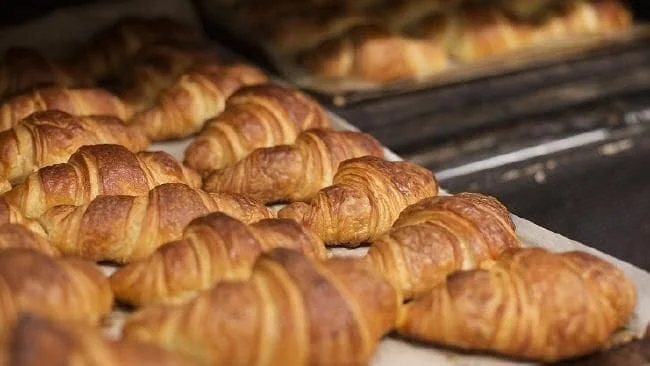8 Steps to Become a Canberra Foodie
IMPRESS family and friends by becoming a foodie. It’s fun and quick. And you get to eat a lot of food. That’s winning in every book.
Emelia and Andrew were the first ever contestants from Canberra in My Kitchen Rules and know a thing or two about being a foodie.
FANCY wine and fancy cheese, special forks and knives that waiters keep swapping around, serviettes that look nicer than some of your artworks at home … being a foodie can be tough work.
It’s not all about fine dining and knowing that you should ask to look at your cheese before ordering it. Being a foodie is about enjoying your food, knowing about it and being comfortable to try different things. From farm fresh fast food (yeah, it does exist) to food trucks to restaurants that showcase the best of the local stuff, half the fun is learning. And then viola, you’re a foodie … sort of.
Andrew Hinge and Emelia Vimalasiri, the first ever My Kitchen Rules contestants from Canberra, have these tips to help you sound like you know what you’re talking about when it comes to food.
1) Use big words and phrases. Try out ‘molecular gastronomy’, ‘zabaglione’, ‘palate’, ‘cleansing the palate’, ‘locavore’, ‘artisan’ and so on. Work on expanding your vocabulary and practice the usage of your new words and phrases on someone — so you can be sure you are pronouncing the words and phrases right — and using them in the right context.
According to Emelia, “Sage restaurant is one of the best places to try this at. They always do something really different and push the boundaries with cooking techniques all the time. They also are constantly asking their customers to critique their food.”
Sounds like a good place to try out some of those words …
2) Get to know your local ingredients. Look into what’s in season and go one step further and ask chefs where they got their smoked meats or truffles from. You’ll know what you’re talking about and they’ll know you’re wondering if they source locally.
3) Always order the tasting menu if it’s available. These menus are designed to showcase what’s fresh and seasonal, so by choosing the tasting menu you are demonstrating that you know enough about the importance of fresh and local food and trust the chef. “Most restaurants in offer a seasonal tasting menu,” Emelia explains.
4) Don’t be afraid to order off the menu. Sometimes chefs have small quantities of special ingredients that are fresh and local — not enough to offer to everyone but they may be happy to cook something different for the right person. The right person is not afraid to ask, demonstrating their confidence and knowledge. And the worst that can happen is that they’ll say no, or look at you strangely. And then you could use one of your big phrases to completely stump them.
5) Stay up to date with trends. Local and seasonal food isn’t a trend; it’s a shift in collective thinking. True food trends can be as fleeting as some relationships. Mexican today, Korean tomorrow, some fusion the day after that. By reading blogs, following in-the-know foodies on Instagram and Twitter, and staying up to date with what famous chefs are doing (here and around the world) you’ll have the knowledge to actually talk about food like you know about it. According to Emelia and Andrew the culinary trend right now is South American-style ceviche. So make like an in-the-know foodie and do a bit of research on what that actually is. When your ceviche comes marinated in lemon juice you’ll know lime is more commonly used.
6) Read restaurant news. The best way to get knowledgeable about local restaurants is to read up on them. Read reviews, read about new openings, read list pieces about which restaurants are doing new things. Then go to the ones that interest you. You’ll already have a pretty good idea about certain menu items, service and the ambience so it’s a head start without even trying.
That said, Emelia says that “sometimes it’s great to try somewhere that no one else has too. Some of the best food adventures are the ones where you haven’t done any research on at all.” And then you could write your own review — being the first one to review a new restaurant online is a pretty big tick in the ‘I’m a real foodie’ game.
7) Don’t be afraid of teaming two ingredients that aren’t usually served together when cooking. Just picture your friends’ faces when you present a salad of local smoked chicken and pickled beetroot. “I just thought the two distinct flavours would work really well together” you could say in a really nonchalant tone.
8) Don’t be seen at the mega takeaway chains. Real foodies don’t go to McDonalds (unless they are overseas and then it’s for the research purposes (What kind of burgers do they serve in India? Are rosti chips in Switzerland better than standard chips? How does the pineapple pie in Thailand compare to our apple pie? You get the drift).
Where to be a foodie in Canberra:
Canberra is a great place to try out your new foodie knowledge and Emelia and Andrew have these tips:
- Truffle season in Canberra is a great time to visit the capital. It runs from late June to late August.
- Canberra’s smoked meats are also a big hit. “You can try them at Poacher’s Pantry near Murrumbateman,” says Andrew.
- “Temporada is a great place that has a menu that changes often with the seasons,” says Emelia.
- “Brodburger, Burmese Curry House and the Mandalay Bus are three unique and great fast food venues here in Canberra,” says Andrew.






